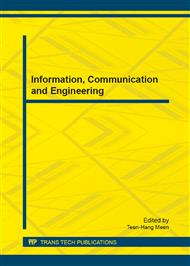p.105
p.111
p.117
p.123
p.129
p.135
p.141
p.147
p.153
A Novel Adaptive Fast Learning Algorithm for 2DPCA
Abstract:
We propose a novel adaptive fast learning (AFL) algorithm for two-dimensional principal component analysis (2DPCA) in this paper. As opposite to conventional PCA which is based on 1D data vectors, 2DPCA is based on 2D image matrices and thus has higher accuracy than conventional PCA when applied to applications such as face recognition, facial expression recognition, palmprint recognition, etc. Our proposed AFL algorithm simultaneously estimates both eigenvectors and corresponding eigenvalues, and then adaptively sets the learning rate parameters of neurons to ensure all neurons learning with almost the same fast speed. Requiring no image covariance matrix evaluation, the desired multiple eigenvectors of 2DPCA can thus be learned effectively in the form of weight vectors of neurons. The proposed AFL algorithm can also be applied to learning for T-2DPCA. Simulation experiments performed on face database such as the YaleB database clearly demonstrate that the proposed AFL algorithm performs very well and thus is a very effective computational tool for both 2DPCA and T-2DPCA.
Info:
Periodical:
Pages:
129-134
Citation:
Online since:
February 2013
Authors:
Price:
Сopyright:
© 2013 Trans Tech Publications Ltd. All Rights Reserved
Share:
Citation:


